10 Frosty Clues That Tell You It’s Too Cold For Your Cats To Be Outside
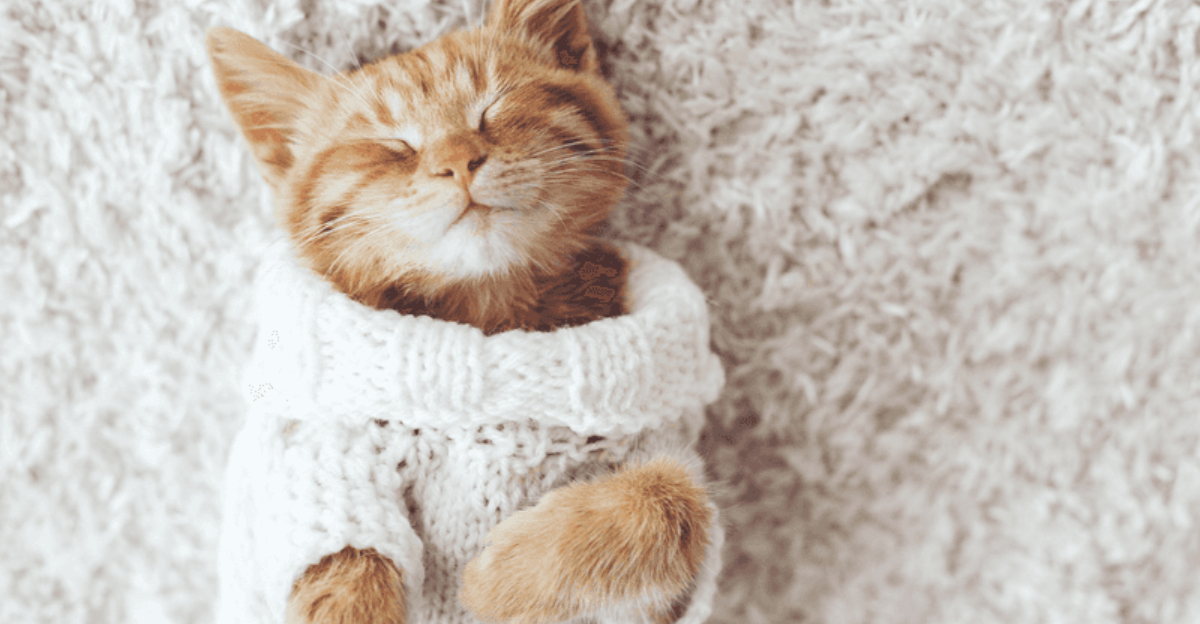
When temperatures plummet and snowflakes start to fall, it’s not just humans who need to bundle up. Our feline friends are also susceptible to the harshness of winter weather. Recognizing the signs that it’s too cold outside for your cat is crucial to ensuring their well-being and comfort.
Here, we identify tell-tale frosty clues that suggest it’s time for your indoor explorer to stay nestled in a cozy corner rather than venture out into the chilly world.
1. Frozen Water Bowls
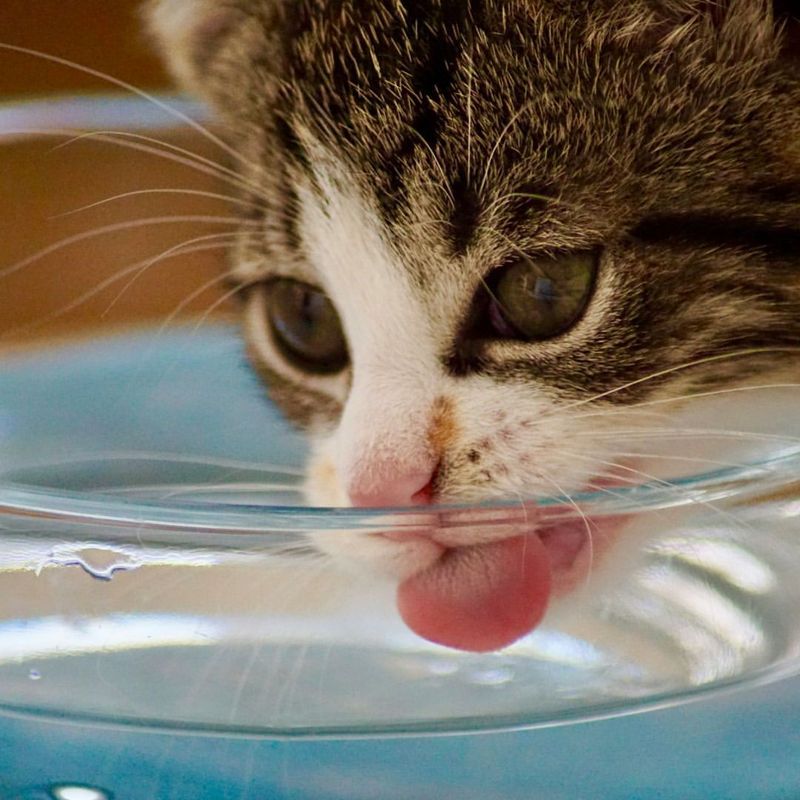
Cats might be curious about water, but when their water bowls are frozen solid, it’s a sure sign that temperatures have dipped too low. If you place a bowl outside and notice ice forming within minutes, it’s an unmistakable indicator that the chill is not cat-friendly. Frozen water means your pet can’t hydrate, which is as essential in cold weather as it is in summer.
Your furry friend needs consistent access to liquid water, and if the outside world turns it into ice, it’s time to keep kitty indoors. Consider this a frosty sign that staying inside with a warm bowl of fresh water is the best option.
Not only is the presence of ice a sign of cold, but it also poses risks like frostbite on those curious little paws. Keep an eye on your pet’s water, and remember that if it’s too cold for hydration, it’s too cold for exploration.
2. Shivering
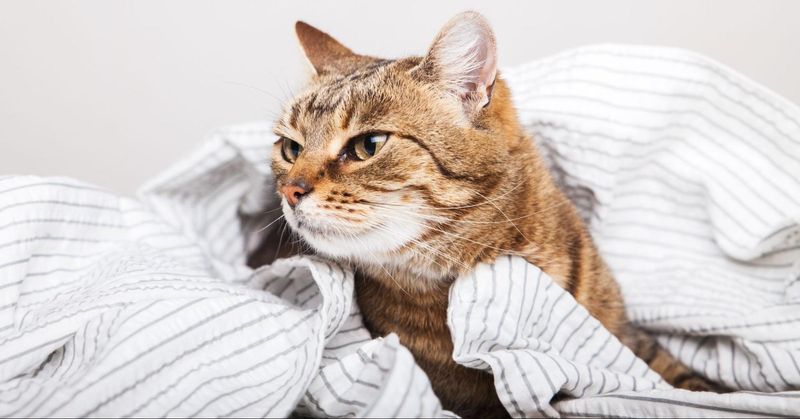
Just like humans, cats can shiver when they’re cold, and this involuntary reaction is a major clue that temperatures are too frigid for them. A cat that’s trembling or trying to fluff up its fur to trap heat is signaling its discomfort. Shivering isn’t just a cute quirk; it’s a clear message that your feline is fighting to stay warm.
Notice this behavior, and it’s time to usher your furry friend back indoors where it’s warm and cozy. While cats have fur coats, they’re not bulletproof against the cold. Prolonged exposure can lead to hypothermia, which can be life-threatening.
Keep a lookout for these signs, and ensure your kitty has access to warm spaces. A cozy blanket or a heated bed can make all the difference in keeping them comfortable. Remember, if your cat is shivering, it’s not just a hint—it’s a plea to head back inside.
3. Icy Walkways
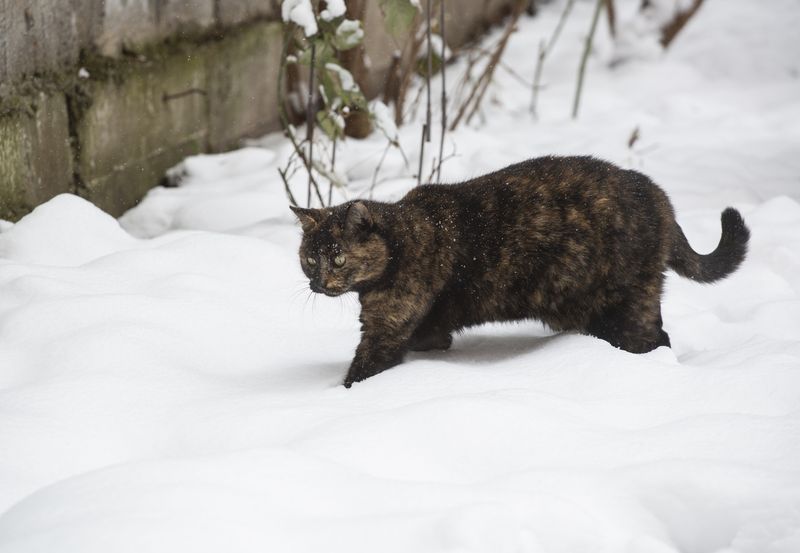
When the ground turns into an ice rink, it’s a telling sign that conditions are treacherous for your feline adventurer. Cats are nimble, but icy surfaces can be risky; slips and slides aren’t just for humans. Their paws aren’t designed for ice skating, and falls can be hazardous.
If you notice that walkways and paths are covered in ice, reconsider letting your cat roam free. The risk of injury from slipping is compounded by the additional threat of frostbite on their delicate pads. Icy surfaces not only make it hard for cats to maintain their graceful composure but also enhance the chill factor.
Consider keeping your cat inside when ice is prevalent. Provide alternative entertainment, like indoor play sessions, to keep them active and engaged. Remember, preventing your cat from a risky icy adventure is just being a smart pet owner.
4. Snow-Covered Whiskers
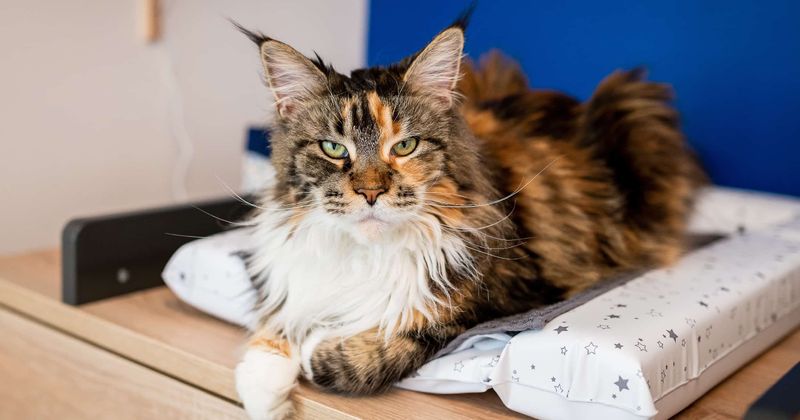
Whiskers are not just cute; they’re also incredibly sensitive to changes in the environment. When your cat’s whiskers come back with a dusting of snow, it’s a whimsical but serious sign. Snow-covered whiskers mean your cat is trudging through weather cold enough to be uncomfortable.
Cats explore with their faces, and snow on their whiskers suggests that they’re out in temperatures that might be better for a snowman than a kitty. The presence of snowflakes clinging to those long, elegant hairs is a gentle nudge to reconsider outdoor excursions.
It’s best to observe your cat’s return from the great outdoors. If their whiskers are frosted, it’s time to swoop them up for indoor warmth. Keep an eye on this chilly clue, and make sure your cat’s whiskers stay snow-free by encouraging indoor activities.
5. Reluctance to Go Out
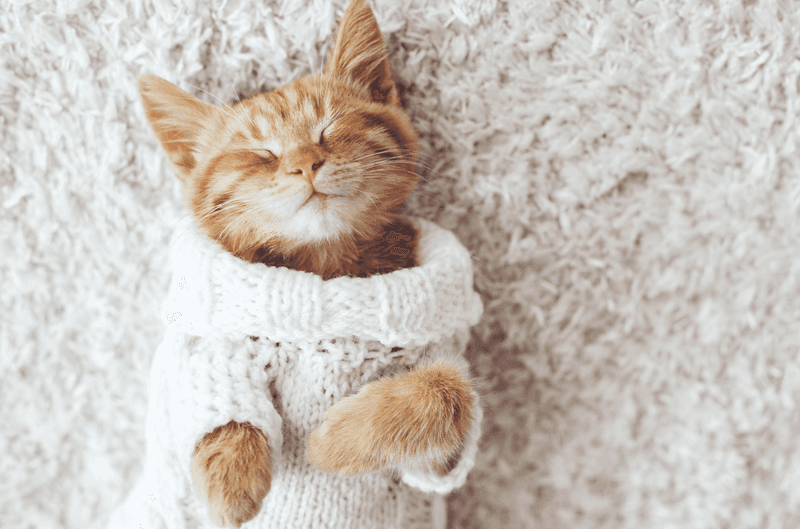
Sometimes, the best clues come directly from the cat itself. When your feline hesitates at the door and appears uninterested in stepping into the outdoor chill, take the hint. Cats are intuitive about their comfort levels, and reluctance to venture outside is a big red flag.
Pay attention if your cat seems happy to view the world from the warmth of the window rather than explore it firsthand. This behavior is a strong signal that conditions aren’t conducive to an outside frolic.
Respect their instincts, and provide indoor entertainment to keep them stimulated. Whether it’s batting around a toy mouse or curling up in the sunniest spot, your cat knows where it wants to be. Trust their judgment and keep them cozy indoors during frosty spells.
6. Paw Lifting
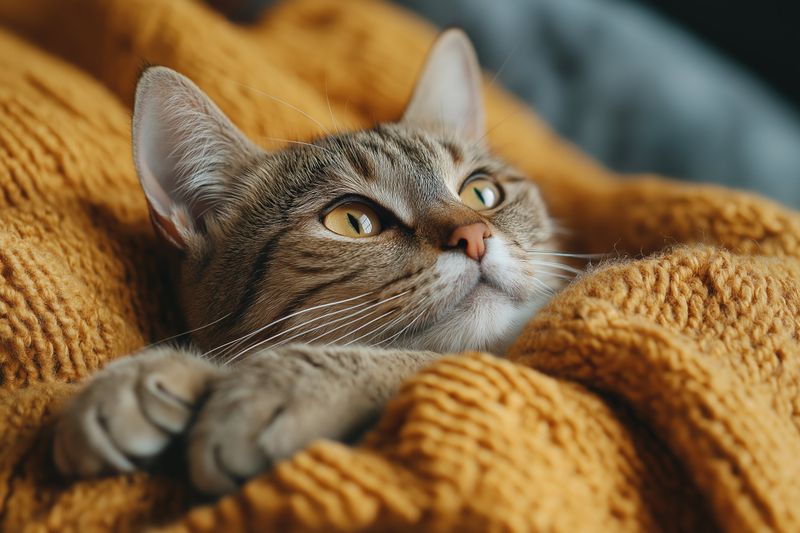
Cats have a quirky way of telling us it’s too cold: through the dance of the lifted paws. When a cat starts gingerly lifting its paws, it’s trying to minimize contact with the icy ground. This behavior is more than a cute cat dance; it’s a clear message that the pavement is too cold for comfort.
Paw lifting is a method of self-preservation, as extended contact with freezing surfaces can lead to frostbite. If you see your cat switching from paw to paw, it’s a sign they’re not enjoying their outdoor escapade.
Bring your cat inside to prevent frostbite and discomfort. Treat those paws to some gentle warmth, and let your cat bask in the inside comforts. Remember, if your cat is performing the paw-lifting jig, it’s a signal to end the chilly adventure.
7. Seeking Shelter
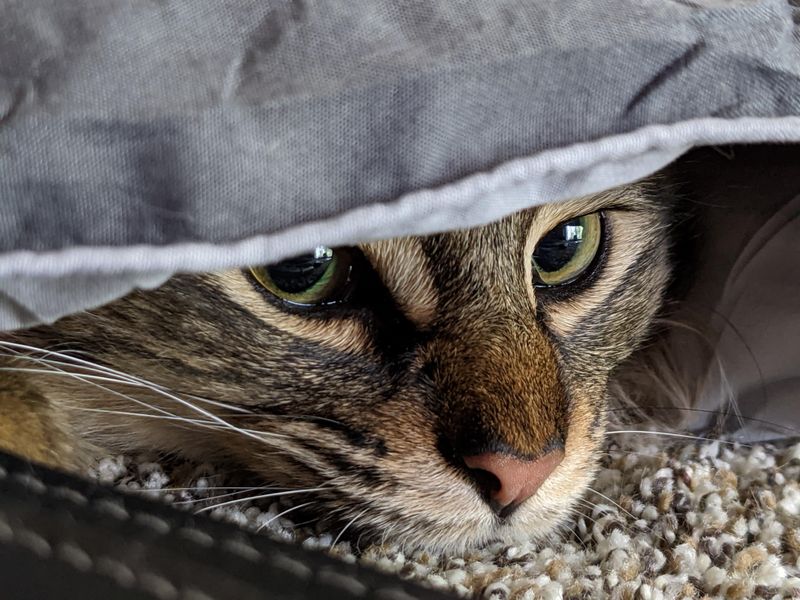
When the going gets tough, the tough find shelter. If your cat is seeking refuge under anything it can find outside, it’s a sure sign the weather is too cold. Cats are resourceful, but a huddled kitty under a bench or bush is looking for warmth away from the biting wind.
This behavior indicates that your cat is instinctively searching for a makeshift hideaway to escape the cold. While adventurous by nature, even the heartiest feline knows when it’s time to seek cover.
If you spot your cat shivering in a makeshift shelter, it’s time to bring them indoors. Offer them a warm bed and some extra love to shake off the chill. Remember, even the bravest cat needs a warm place when winter is at its worst.
8. Frost on Fur
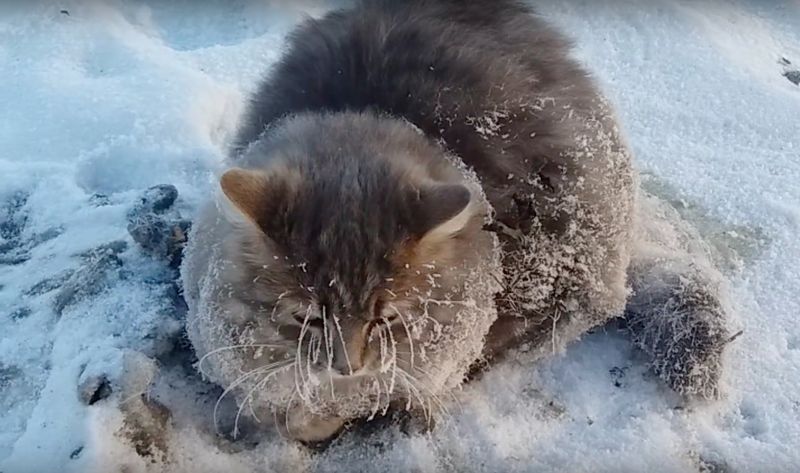
Fur might seem like the perfect armor against the cold, but when frost starts forming, it’s a hint that things have gotten too chilly. Cats can accumulate frost on their fur, especially if they’re out in freezing conditions for too long.
This frosty coating is more than a cool look; it signals that the outdoors is not a friendly place for your pet at the moment. Frost forms when the moisture in the air freezes upon contact, and this can lead to cold stress for your feline.
You’ll want to scoop them up and bring them inside to warmth and safety. Keep an eye out for this icy indicator, and make sure your cat’s adventures are frost-free. As adorable as frosted fur may look, it’s a sure sign to stay indoors.
9. Chilly Noses
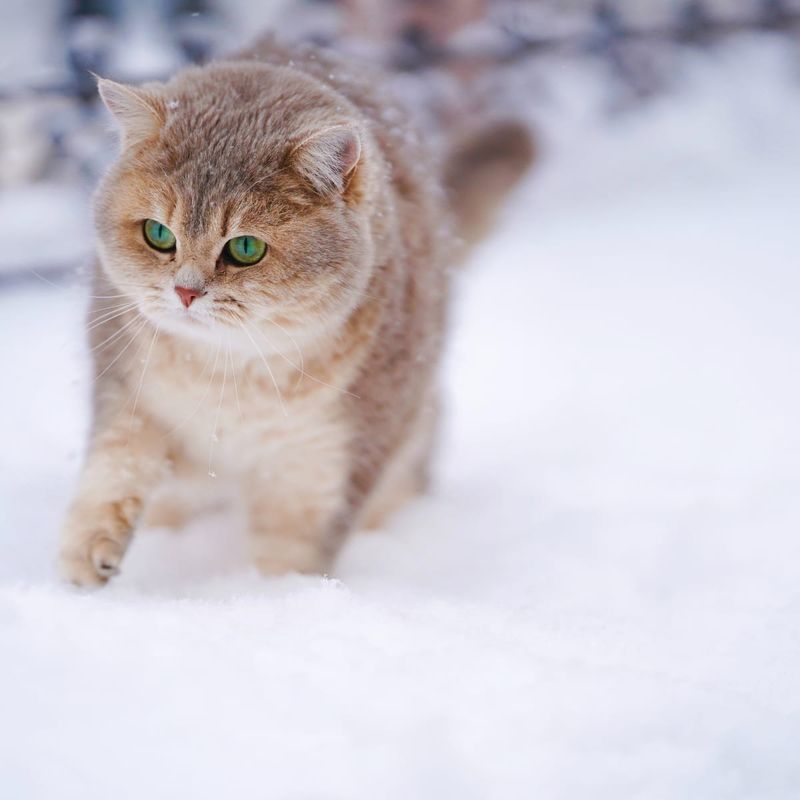
A cat’s nose is always on the move, exploring and sniffing. But when those sniffles become frosty, it’s a sign that environments are turning too cold. A chilly nose isn’t just due to curiosity—it reflects ambient temperatures that are too harsh.
Sneezes may follow as your cat tries to keep its nose warm and functional. Cats need a fully operational nose to explore their world, and if it’s turning frosty, it’s time to rethink outdoor activities. Check their noses upon return from outside for any signs of cold.
Keep your feline’s nose warm by limiting their time outside and providing a warm indoor environment. A warm cuddle or a comfy spot by the heater can help keep those sniffles at bay. Remember, a frosty nose is a red flag waving for indoor play.
10. Slow Movements
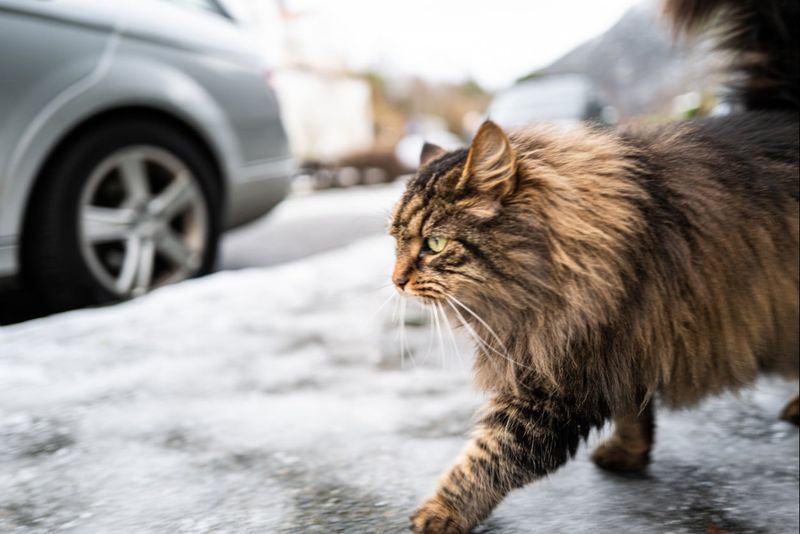
Cats are known for their grace and agility, so when you notice them moving sluggishly, it’s a sign that the cold is sapping their energy. Slow movements indicate that a cat is feeling the effects of the chill, as cold weather can stiffen joints and drain warmth.
This lethargic pacing is more than just a lazy day—it’s a sign that your feline friend is conserving energy to stay warm. If you observe this behavior outside, it’s time to bring your cat indoors.
Offer them a warm environment to rejuvenate and regain their usual pep. A warm blanket or a heated cat bed can work wonders. Remember, a sluggish cat is signaling for a pause in outdoor adventures; heed their message to keep them healthy and happy.
